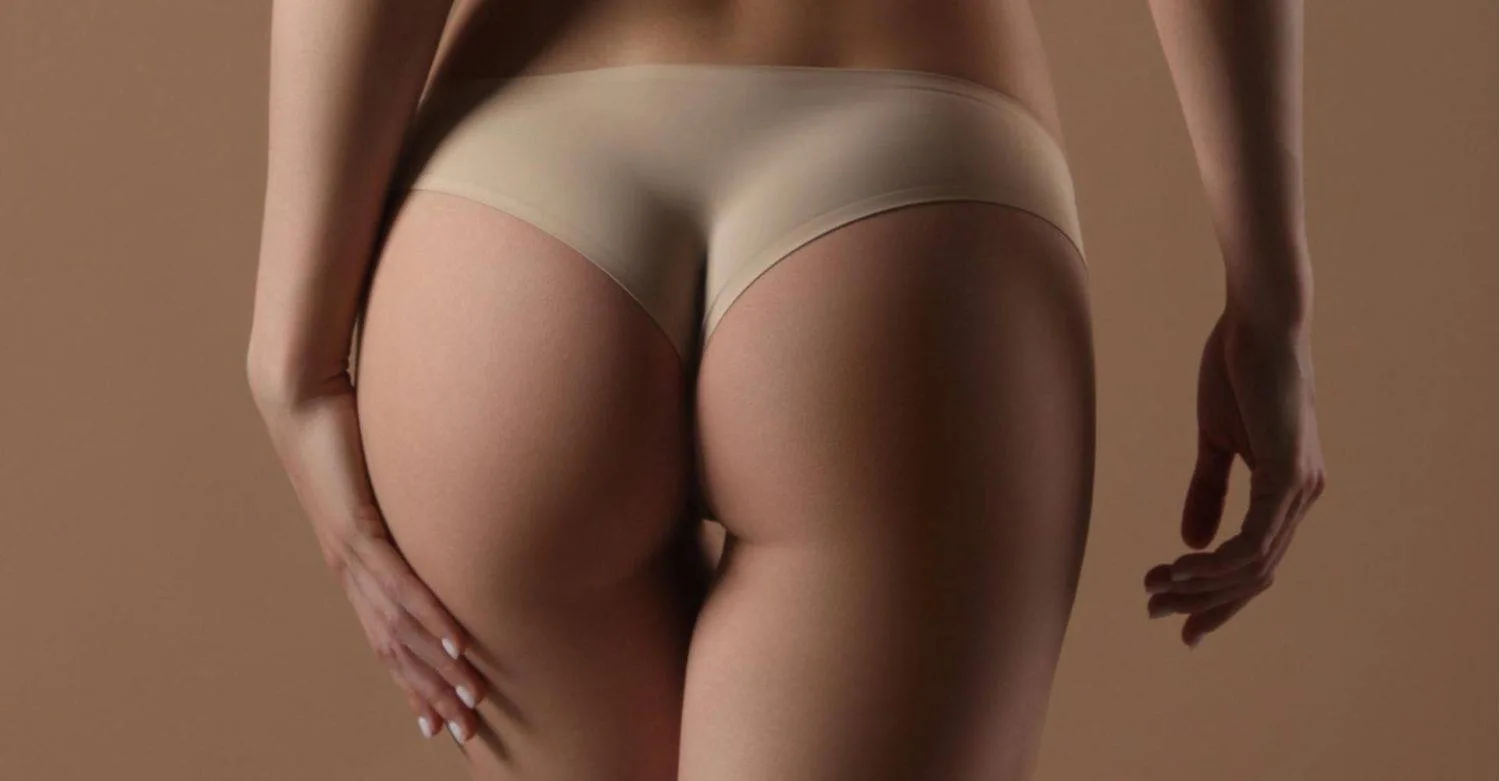BBL (Brazilian Butt Lift) is becoming one of the most popular procedures worldwide due to the high rate of patient satisfaction. Unfortunately, an alarming number of deaths from a fat embolism and poor surgical techniques earned this procedure a bad reputation, and questions of whether BBL is safe enough to pursue.
Brazilian Butt Lift is a surgery that extracts fat from one area of the patient’s body using liposuction and transfers it into the hips and buttocks to add volume to the area and achieve an hourglass figure. In other words, it is a fat transfer procedure performed on the hips and buttocks.
At the CREO clinic, Dr Omar Tillo is a key opinion leader on the BBL procedure, having pioneered the BEST-F technique (Buttock Enhancement and Superficial Transfer of Fat), a significantly safer alternative to traditional BBL, with 0 reports of fatality.
In this article, we’ll explain the main safety concerns of the BBL procedure and how we mitigate such risks at the CREO clinic.
Risks of Brazilian Butt Lift
Brazilian Butt Lift is unique amongst other surgical procedures as it can lead to many serious medical and cosmetic complications when performed incorrectly. Below, we outline some of the most prevalent risks that patients can face from the traditional BBL procedure.
Infection
Postoperative infections are the most common complications seen at the NHS in patients having surgery abroad. Infections can lead to loss of fat volume, admission to hospital, sepsis, and death. It is extremely important to follow strict infection control protocols in all fat transfer procedures as the consequences can be very serious.
At Creo Clinic, Dr Tillo performs all BBLs only in hospitals that are registered and approved by the CQC. He performs surgeries in the sterile environment of an operating theatre, where all surgical instruments are single-use which reduces the risks of infection and contamination.
Fat Necrosis
Fat necrosis is a condition that damages the fat tissue in an area of the body due to a lack of blood supply. Although benign, this is a significant cosmetic concern for patients, as the affected area can turn lumpy and uneven.
As BBL requires the transfer of fat cells into the buttock, which integrate into the blood supply, fat necrosis is a risk of the procedure. However, a skilled surgeon knows how to minimise this risk by carefully grafting and diffusing the fat and injecting the right amount. Furthermore, the patient too has a role to play in preventing fat necrosis by following the recovery guidelines provided by the surgeon.
Oil Cysts
Oil cysts are sacs of oil that occur following the breakdown of fat cells. Therefore, fat necrosis can lead to oil cysts. When fat necrosis occurs, the broken down fat tissue either hardens into scar tissue or melts and forms oil cysts. The oil cysts usually shrink by themselves, or a doctor can aspirate the cysts by suctioning out the fluid. However, oil cysts are a rare risk that often occurs due to over grafting, a complication which qualified surgeons are skilled at avoiding.
Volume Loss and Asymmetry
Over the first three months after your surgery, your body will absorb 30-50% of injected fat cells. As a result, you will experience a loss of volume compared with the initial results of your surgery. Furthermore, the surgeon must inject the fat with precision to recreate the patient’s desired buttock shape.
Untrained surgeons may harvest or inject inadequate amounts of fat and produce results and shapes that may not meet the patient’s expectations, leaving them with a less than satisfactory outcome.
Our surgeon accounts for all these factors and injects more fat cells than needed in specific areas to produce the expected results. Dr Tillo also uses surgical methods that are the least likely to damage the fat, such as the gentle instrumentation in the harvesting, handling, and transferring of fat tissue.
Death
Fat embolisms are responsible for the majority of fatalities associated with a BBL procedure. Fat embolisms develop when fat leaks into blood vessels and blocks the blood flow into the lungs. When a fat embolism develops following a BBL, it is due to the fat cells having leaked into the gluteal vein.
Board-certified surgeons are now aware of this risk and do not inject fat into or under the gluteal muscle, thus significantly minimising the risk of fat embolisms. Furthermore, countries such as the UK have regulations that prevent surgeons from attempting such risky techniques. On the other hand, patients who seek the procedure in an unregulated setting are at risk of choosing a surgeon who still practices this approach.
How Does a BBL Work?
A BBL works by transferring fat extracted from one area of the body into the buttocks. Therefore, a surgeon will perform liposuction on areas containing excess fat, such as the abdomen, process the fat, and inject it into the buttocks.
In a traditional BBL procedure, the surgeon injects large amounts of fat into the gluteal muscle to produce an exaggerated and often disproportionately larger buttock. Due to greater awareness of its risks and the development of safer techniques, the traditional BBL is an outdated approach in the UK. However, it remains cheap and widely available in many other countries.
Advances in BBL Safety
At the CREO clinic, our surgeons use significantly safer surgical methods and advanced technologies to perform BBLs. In particular, Dr Tillo introduced a safer surgical technique for BBL, known as the BEST-F technique, which is vastly superior in terms of safety and results compared to the traditional BBL.
BEST-F Technique
The Buttock Enhancement and Superficial Transfer of Fat (BEST-F) is an alternative surgical technique for performing BBL. Along with additional safety precautions, it enhances the buttock by injecting fat over the gluteal muscle. Thus, it significantly minimises the risk of complications that arise from the traditional BBL.
Furthermore, Dr. Tillo performs the procedure with a guided ultrasound device, ensuring that the surgeon doesn’t inject fat into the gluteal muscle. It also aids the surgeon in carefully and accurately grafting the fat to produce the desired buttock shape.
Procedure
A BBL procedure using the BEST-F technique takes between 2-4 hours to perform. First, the surgeon performs liposuction. Our surgeons at the CREO clinic usually extract fat from areas around the buttock, such as the abdomen and flanks, to further sculpt the buttock shape and enhance the silhouette. Afterwards, the harvested fat is processed and prepared for transfer. Finally, the surgeon injects the fat over the gluteal muscle with the aid of a guided ultrasound device.
Safety
The BEST-F technique is significantly safer than a traditional BBL. The injection of fat superficially over the gluteal muscle and the precaution of using an ultrasound scan to monitor the fat transfer process maximises patient safety. Furthermore, as a double board-certified plastic surgeon who has successfully performed hundreds of BBL and liposuction procedures, Dr Tillo prioritises the patient’s safety throughout the procedure.
Results
At the CREO clinic, our surgeons aim to produce natural results proportionate to the patient’s body. Therefore, our surgeons will inject the appropriate amount of fat to deliver your desired enhancement, rather than an insufficient or exaggerated enhancement. Furthermore, the liposuction will further sculpt the patient’s body, thus contouring areas around the buttock to further emphasise the results of the BBL.
How to Find a Qualified Plastic Surgeon
If you are interested in a BBL procedure, you must find an experienced and qualified plastic surgeon to perform your surgery. Here are some tips for choosing the right surgeon:
- Check your surgeon’s credentials and training. You should select a board-certified surgeon who has extensive training in performing BBLs.
- Choose a surgeon who specialises in performing BBLs. Surgeons that specialise in a particular surgery will have done the procedure on hundreds of patients. As a result, they will have mastered the skills and artistry needed for producing the best results.
- Find out the safety measures and precautions that your surgeon takes to ensure your safety throughout the procedure.
Is BBL Worth It?
For people who want to enhance their buttock to attain their ideal figure, BBL offers a permanent and organic solution, in contrast to fillers or implants. When performed by a qualified plastic surgeon, many patients are happy with the outcome of their BBL and consider it to be a worthwhile procedure. In particular, patients are confident of their decision when aware of the safety precautions taken by their surgeon. However, it is a dangerous procedure if performed by an untrained surgeon.
Schedule a BBL Consultation at CREO Clinic
If you are interested in a Brazilian Butt Lift, or want to further discuss whether BBL is safe, schedule a consultation with Dr Omar Tillo at the CREO clinic. During your consultation, Dr Tillo will listen to your cosmetic concerns, expected results, and examine you to determine your suitability for the procedure. Furthermore, he will answer any questions you may have and openly discuss the associated risks of a BBL.







